This page is dedicated in loving memory of Chelsea Cromartie (1995-2004)
Click on Chelsea’s picture for a slideshow about her story.
Four years after she was a student in my PreK classroom, 8-year-old Chelsea was playing with Barbies on her aunt’s living room floor in northeast Washington, D.C. when bullets sprayed through the front window. Chelsea’s aunt was hit in the shoulder and recovered, but Chelsea was shot in the head and died a short time later. Under intense pressure from the community, witnesses eventually came forward with enough information for police to arrest three teenage suspects. The gunfire apparently began after an argument over how someone was dressed. Rasheed Hall admitted to firing the shot that mistakenly killed Chelsea and was sentenced to twenty-three years in prison. His younger brother, who brought him the gun, was sentenced to two decades. Sadly, both boys are under the age of 18, contributing to the epidemic of children killing children in the city: Chelsea was the 30th juvenile to be murdered in Washington D.C. in a four month period. This senseless murder will forever be a lesson to the students I teach on the downfalls of being unable to solve problems without violence.
What’s Here
Despite what some people might like you to believe, teaching in urban and other low socio-economic (low-SES) schools DOES present a different set of challenges for educators. Unfortunately, preparation for those challenges is not always provided in college teacher-prep courses or by school districts. It’s no secret that young teachers are fleeing in droves from our nation’s neediest schools. It’s my hope that this page provides some support to help those teachers and their students be successful in exceedingly difficult circumstances.
Does The Cornerstone Work in High-Poverty Schools?
My website and book are based on what I know works from personal experience. Everything I share is something I’ve personally tried and know to be effective from my work in education. Nine of my eleven years as a classroom teacher were spent in in Title I schools working with inner city and urban populations in Washington D.C., Fort Lauderdale, and Miami. Now as an instructional coach, I work primarily with teachers in the South Bronx. So, The Cornerstone ideas, activities, and behavior management techniques were created in urban schools and were designed to be effective with high-poverty students.
Chapter 18: The Challenges of High-Poverty Schools
I’ve dedicated an entire chapter of my book to exploring the realities of teaching in low ses areas! You’ll learn about my own background and experiences living and working in the inner city, and why I have a special heart for the teachers and kids there. The chapter focuses on 5 important mindsets that I believe are critical for long-term success in high-poverty classrooms.
If you are a teacher in a high-poverty school and don’t have the resources to buy The Cornerstone book/eBook, please email me and I will send you a PDF of Chapter 18: “The Challenges of Teaching in High-Poverty Schools: Tools to Help You Succeed With Disadvantaged Children”. You are a tremendous blessing for our neediest students, and I want to encourage you in every way I can!
My Blog Posts on High-Poverty Education
My reflections on learning at an ASCD conference where I attended a number of sessions on working with students in low-socio-economic area. The questions I tackled in this post were: Can one student threaten the stability of an entire classroom and prevent a teacher from being effective? Is it possible to bridge the gap for EVERY child? How can teachers and students keep from drowning in the sea of distractions that compromise learning each day?
My live-blogged notes from the ASCD conference session “Pushing the Effects of Poverty Out of the Classroom.” The woman speaking was incredible!! I’ve since interviewed her and am working on a blog post that shares her responses.
My blog post and podcast episode “Speaking out about race, poverty, riots, and our students” is something I hope will help my fellow teachers understand some of the deeper systemic issues at play.
Recommended Resources
Learning From Urban Schools from ASCD is a collection of articles and resources about high-poverty schools that have achieved at levels often surpassing those of their wealthier counterparts. Successful urban schools generally have specific traits in common; learn what these factors are and how you can apply them to your own teaching situation.
You should also check out the new Educolor website, newsletter, and weekly Twitter chats. The Educolor movement is about elevating “the voices of public school advocates of color on educational equity and justice.” The discussions of race, poverty, and class that are led by this community are powerful and valuable for every teacher.
These three books are excellent reads for any teacher in a high poverty school. Eric Jensen’s is my personal favorite.
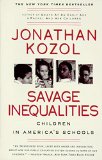
While Jonathan Kozol doesn’t provide many practical strategies for helping students, he gives a critical look at what is happening to our nation’s most impoverished students. ‘Savage Inequalities’ was written in the 80’s and was the first book of it’s kind to put the condition of inner city schools in the public view and trigger real change in the system. His books are so heartfelt and personal that they read almost like a story and I find them almost impossible to put down. I keep his books (there are numerous others, including “Amazing Grace”) in my professional library because they legitimized my passion for working with children in poverty and always inspire me to keep going when I feel overwhelmed. The two pictured above are my favorite.

Angela Watson
Founder and Writer
Sign up to get new Truth for Teachers articles in your inbox
Discussion
OR

Join our
community
of educators
If you are a teacher who is interested in contributing to the Truth for Teachers website, please click here for more information.











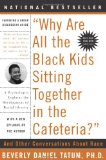
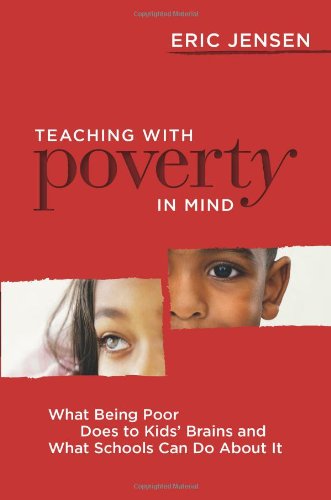
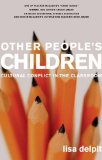
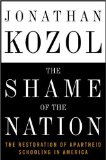






All students I teach are on free or reduced breakfast and lunch. Can you email me chapter 18 to learn strategies for disadvantaged students(per your website)?
My students are very poor and at-risk. I teach 9-12 Social Studies
Hi Angela,
I found your website while looking over teacher information on Pinterest. Thank you for offering a PDF of Chapter 18, its very much appreciated.
I teach at a Title 1 school in New Mexico. I’m going into my tenth year of teaching at a Title 1 school. Two years ago I became our schools reading intervention teacher for 3rd-6th grade. I absolutely love it!!!
However, at times it is hard to do my job and your chapter 18 might just be the answer to my dilemma.
Side Note: We have 14 days of school left and I have found two summer reading books thanks to you, Awakened: Change your mind set to transform your teaching and The Cornerstone.
Any discounts offered for either book? I’m sure you’re aware of a teacher’s salary as well.
Thank you,
Tania Garza
Reading Intervention
MQE RAMS!!
I live in a small town in which most of our students are on free or reduced lunches. Can you please send me a copy of Chapter 18: “The Challenges of Teaching in High-Poverty Schools: Tools to Help You Succeed With Disadvantaged Children”
I am teaching preservice educators. Most of my students are not aware of real poverty, yet will soon be working with many families and students in poverty. Could you please send me the PDF of chapter 18. Thank you so much!